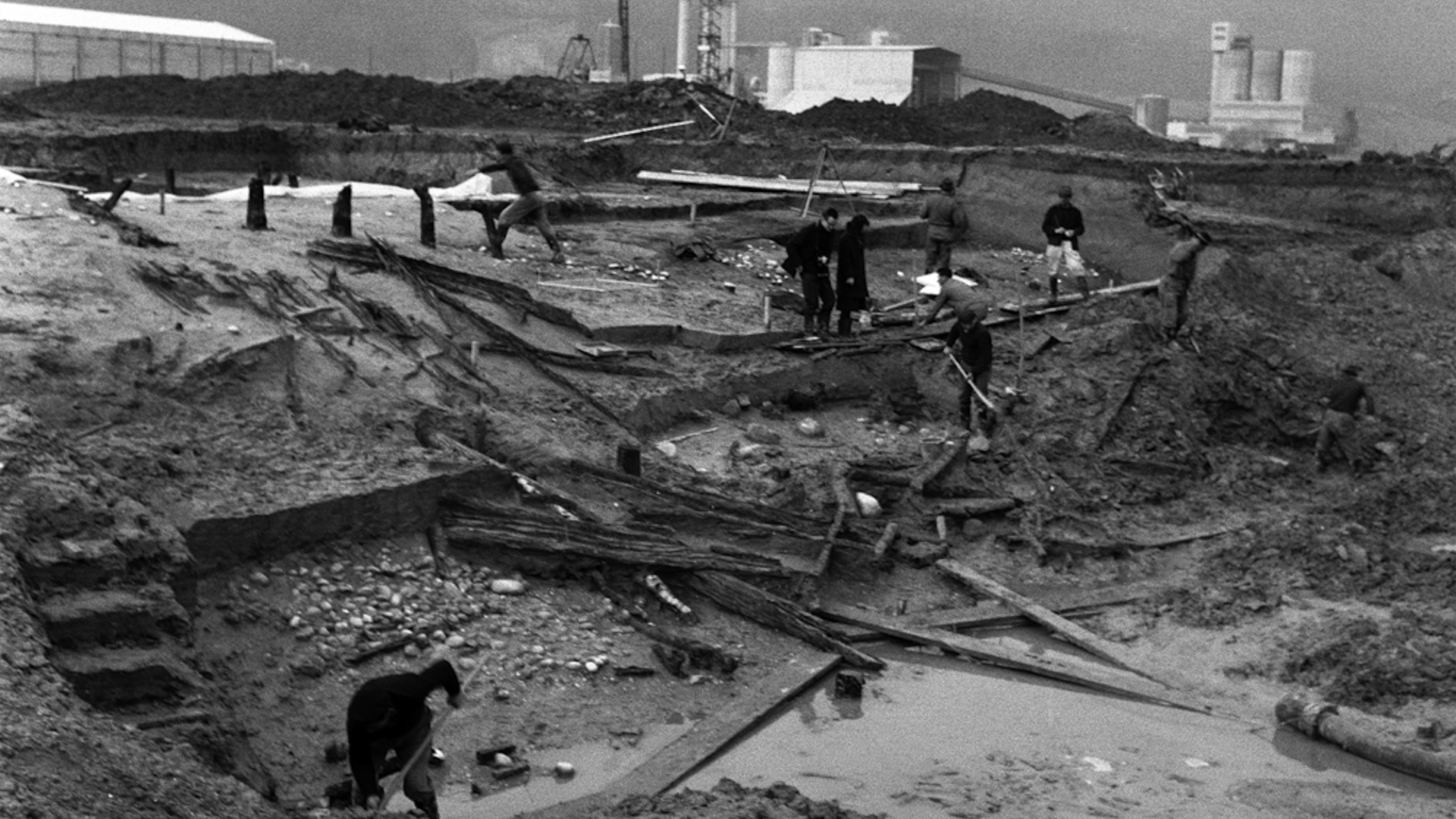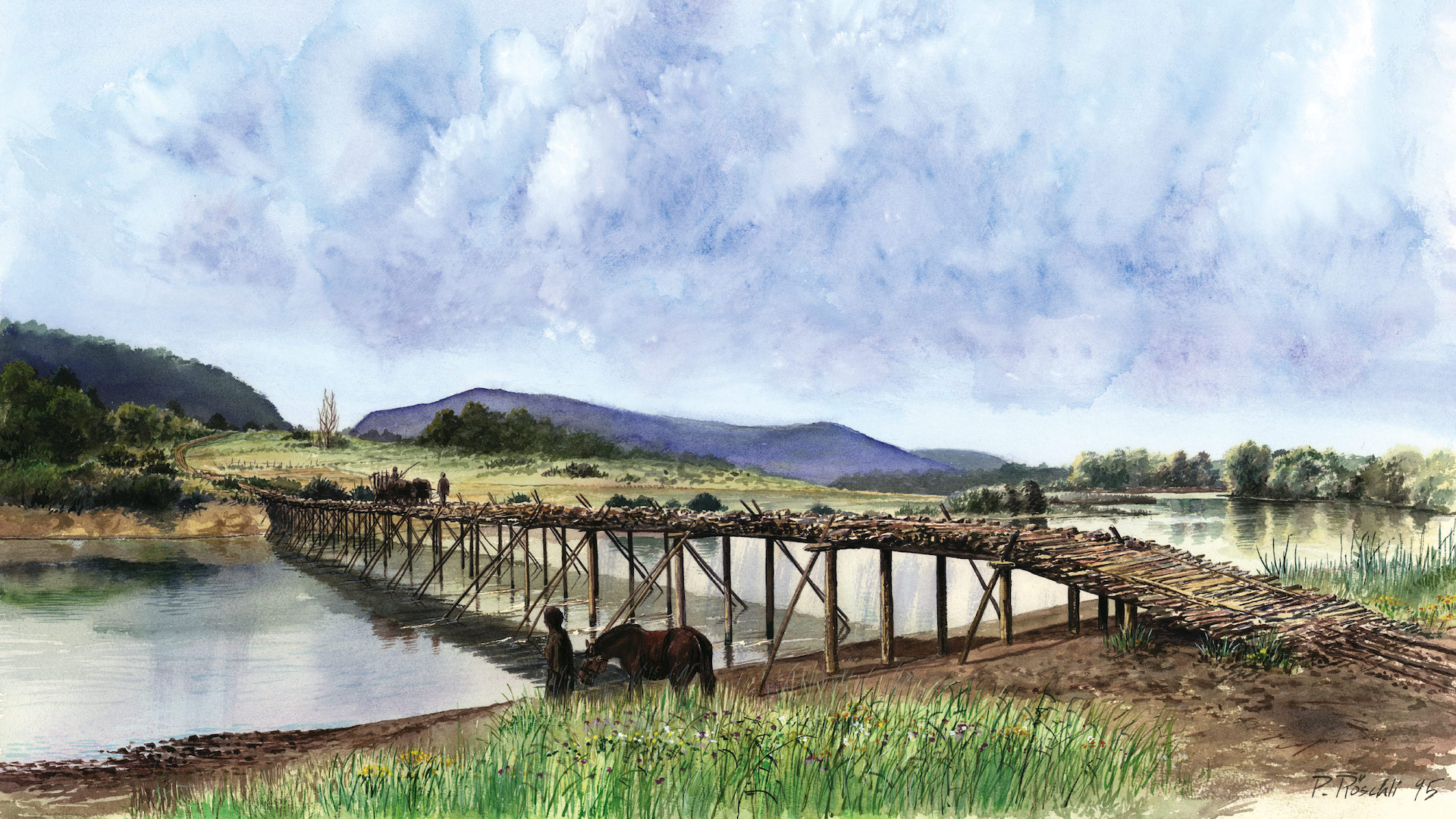2,000 years ago, a bridge in Switzerland collapsed on top of Celtic sacrifice victims, new study suggests
A bridge that collapsed 2,000 years ago in what is now Switzerland may have fallen on Celtic sacrifice victims, a new study finds.

When a small bridge in western Switzerland collapsed 2,000 years ago, the bodies of 20 people, three cows and two horses became entangled in the wreckage. But whether this event was the result of a catastrophic flood or an elaborate ritual sacrifice has puzzled archaeologists for decades. Now, new research, including an analysis of skeletal trauma and genetics, suggests that the answer may be both.
In the late 1960s, the splintered remains of a wooden bridge across the Thielle River were discovered along with iron and bronze weapons; pottery; and two dozen human and animal skeletons. Most of the recovered human skeletons were those of adult males, in some cases pinned underneath the beams of the bridge, which was initially constructed in 135 B.C. While a flood may have triggered the collapse, resulting in deaths, the other possible interpretation is a Celtic ritual offering of sacrificed humans and animals.
In a study published June 17 in the journal Scientific Reports, researchers used a variety of analysis techniques to suggest that there may have been a complicated sequence of events at the site, including both sacrifices and a bridge collapse.
The researchers investigated the 20 human skeletons to determine each victim's age at death, sex and traumatic injuries. They discovered that most of the dead were male and that about half of the people had sustained blunt-force injuries around the time of death. However, most of the injuries were to the skull, which is at odds with the limb injuries expected in a collapse, and more closely match head trauma inflicted by others. Additional investigations of the animal remains revealed no evidence of sharp trauma that is usually seen in sacrificial contexts, supporting an accidental bridge collapse.
Related: 2,300-year-old scissors and 'folded' sword discovered in a Celtic cremation tomb in Germany
The team also used carbon-14 analysis to date 11 of the human skeletons, with all of them falling between the third and first centuries B.C. Surprisingly, though, the oldest skeleton was dated to 361 to 152 B.C., while the most recent was dated to 167 B.C. to A.D. 7., suggesting that skeletons found in the river ended up there at slightly different times, some through the accident that destroyed the bridge and others through possible violent execution.
In other words, some of the people who were pinned under the bridge may have been long dead when it collapsed.
Sign up for the Live Science daily newsletter now
Get the world’s most fascinating discoveries delivered straight to your inbox.

To investigate the people further, the researchers employed isotope and DNA analyses on the 10 most well-preserved skeletons to see whether they were biologically related and whether they grew up somewhere other than Switzerland. Isotopes — variations of elements that have a different number of neutrons in their nuclei — become part of a person's teeth and bones through the water they drink and the food they eat, and can reveal where a person grew up.
The analysis revealed that nine of them were biologically male and that there were no close genetic relationships. Further, the chemical analysis suggested that the people were descended from West or Central European peoples but that some of them moved around quite a bit during their lives.
Taken together, the evidence adds up to a violent and sudden accident taking place at the bridge, likely in the early first century B.C., "but this bridge had a prior life," study co-leader Marco Milella, a researcher in the Department Anthropology at the University of Bern in Switzerland, said in a statement.
"It may have been a place of sacrifice, and it is conceivable that some corpses preceded the accident," Milella said. "There is no reason to choose between the two alternatives."

Kristina Killgrove is a staff writer at Live Science with a focus on archaeology and paleoanthropology news. Her articles have also appeared in venues such as Forbes, Smithsonian, and Mental Floss. Killgrove holds postgraduate degrees in anthropology and classical archaeology and was formerly a university professor and researcher. She has received awards from the Society for American Archaeology and the American Anthropological Association for her science writing.









